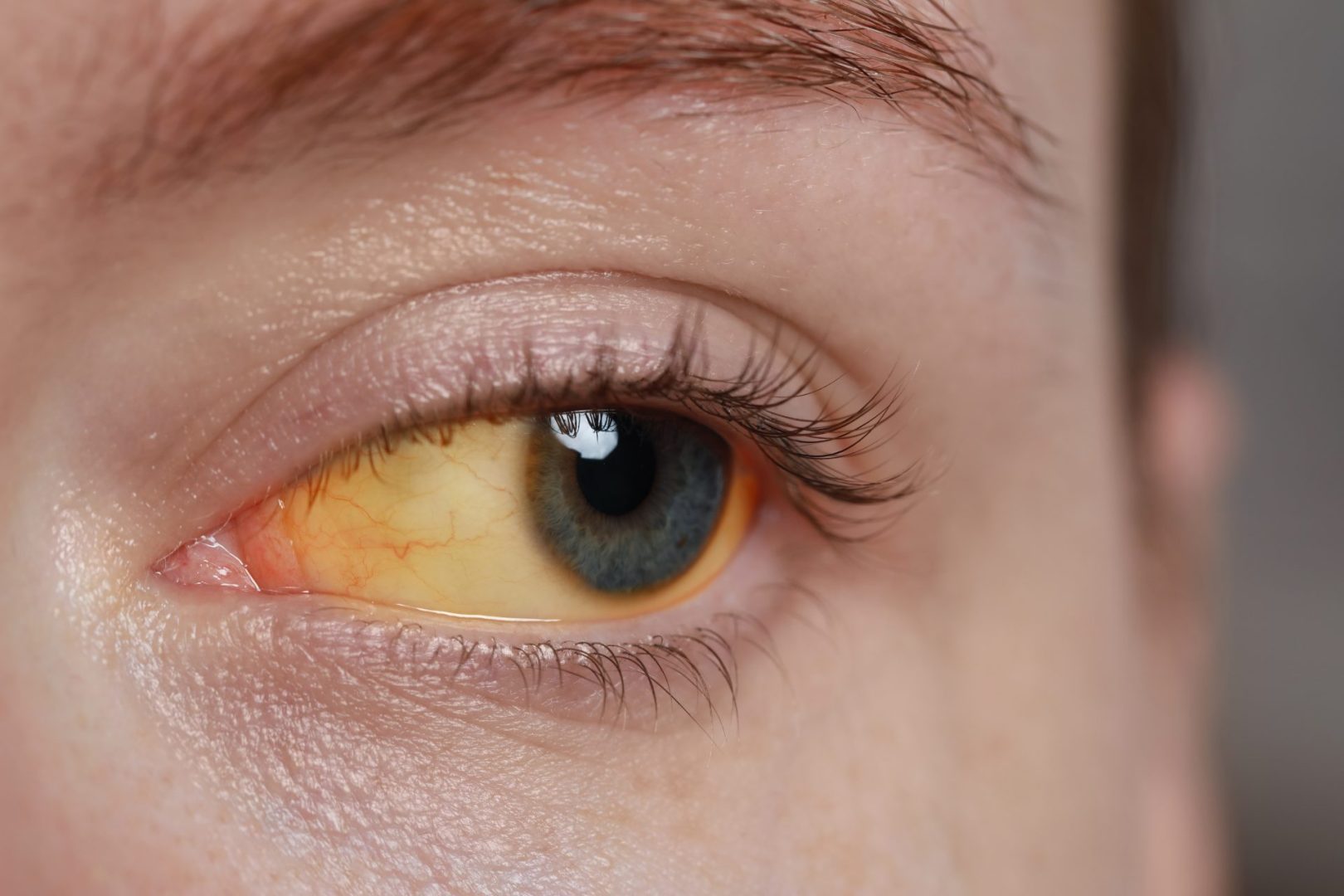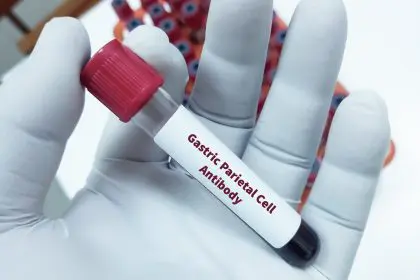The morning after a night of drinking, discovering yellow-tinged eyes staring back from the bathroom mirror should trigger immediate alarm bells. This golden discoloration, medically known as jaundice, signals that your liver has reached a critical breaking point and can no longer process the toxins flooding your system.
Unlike the temporary redness or puffiness that often accompanies hangovers, yellow eyes indicate a fundamental breakdown in liver function that extends far beyond typical alcohol recovery. The liver, your body’s primary detoxification center, has become so overwhelmed or damaged that waste products are backing up into your bloodstream and depositing in visible tissues.
This yellowing represents one of the most serious warning signs your body can produce, indicating that liver cells are dying faster than they can regenerate. When alcohol consumption pushes the liver beyond its remarkable capacity for self-repair, the resulting damage can become irreversible without immediate intervention.
The progression from healthy liver function to visible jaundice often occurs more rapidly than people realize, especially when alcohol consumption has been heavy or prolonged. Understanding the significance of yellow eyes and the accompanying symptoms could mean the difference between recovery and permanent liver damage.
The liver’s desperate attempt to signal distress
The liver performs over 500 vital functions in the human body, from filtering toxins to producing essential proteins and storing energy. When alcohol overwhelms this crucial organ, it begins a cascade of cellular damage that eventually manifests as visible symptoms throughout the body.
Bilirubin, a yellow pigment normally processed and eliminated by healthy liver cells, begins accumulating in the bloodstream when liver function becomes compromised. This buildup occurs because damaged liver cells can no longer effectively break down and eliminate this waste product, causing it to circulate throughout the body.
The eyes show jaundice first because the thin, translucent tissues of the sclera (the white part of the eye) readily display color changes that might not yet be visible in thicker skin. This makes yellow eyes an early warning system that liver function has become critically impaired.
As bilirubin levels continue rising in the bloodstream, the yellowing spreads from the eyes to the skin, creating the classic appearance of jaundice that indicates severe liver dysfunction. By the time skin yellowing becomes apparent, liver damage has typically progressed to dangerous levels.
1. Progressive yellowing that deepens over time
The yellow discoloration associated with liver failure typically begins subtly, appearing as a faint golden tinge that might be dismissed as lighting effects or fatigue. However, this yellowing progressively deepens over hours or days, becoming more pronounced and unmistakable as liver function continues deteriorating.
Early jaundice may only be visible in bright light or when compared to previous photos, making it easy to overlook during the initial stages. As bilirubin levels rise, the yellow color becomes more obvious and persistent, remaining visible under all lighting conditions.
The intensity of yellowing often correlates with the severity of liver damage, with deeper golden or amber coloration indicating more advanced dysfunction. This progression serves as a visual indicator of how rapidly liver cells are being destroyed or failing to function.
Unlike temporary discoloration from other causes, liver-related yellowing doesn’t fade with rest, hydration, or time. Instead, it may continue deepening until medical intervention addresses the underlying liver dysfunction causing bilirubin accumulation.
2. Dark urine accompanying yellow eyes
When the liver fails to process bilirubin effectively, excess amounts spill into the urine, creating a dark amber or tea-colored appearance that contrasts sharply with normal pale yellow urine. This dark coloration often appears simultaneously with or shortly after yellow eyes become noticeable.
The urine darkening occurs because the kidneys attempt to eliminate the excess bilirubin that the liver cannot process, creating a backup elimination pathway that results in visible color changes. This compensation mechanism indicates that liver dysfunction has reached levels where normal processing pathways are insufficient.
Urine color changes may fluctuate throughout the day based on hydration levels and liver function variations, but the overall trend toward darker coloration persists as long as liver dysfunction continues. This makes urine monitoring a valuable way to track liver recovery or deterioration.
The combination of yellow eyes and dark urine creates a characteristic pattern that strongly suggests liver-related jaundice rather than other causes of eye discoloration, helping differentiate liver failure from less serious conditions.
3. Abdominal pain and swelling in the liver area
Liver failure often produces distinct abdominal discomfort located in the upper right portion of the torso, just below the rib cage where the liver sits. This pain may feel like a dull ache, sharp stabbing sensation, or constant pressure that worsens with movement or deep breathing.
The liver itself contains few pain receptors, so discomfort typically results from the organ’s swelling pressing against surrounding tissues and the protective capsule that surrounds it. This swelling occurs as liver cells become inflamed or as scar tissue begins forming in response to ongoing damage.
Abdominal distension may accompany liver pain as fluid accumulates in the abdominal cavity, a condition that occurs when the liver can no longer produce adequate amounts of proteins needed to maintain proper fluid balance throughout the body.
The pain pattern associated with liver failure often differs from typical stomach discomfort, remaining localized to the liver area rather than spreading throughout the abdomen. This specific location helps identify liver-related problems versus digestive issues or other abdominal conditions.
4. Nausea and vomiting that won’t resolve
Persistent nausea that doesn’t improve with typical hangover remedies indicates that liver dysfunction has progressed beyond simple alcohol processing delays. When the liver cannot effectively filter toxins from the blood, these substances continue circulating and trigger ongoing nausea responses.
The vomiting associated with liver failure often produces bile-tinged fluid rather than typical stomach contents, reflecting the liver’s inability to process and store bile properly. This greenish-yellow vomit indicates that digestive processes have become disrupted due to liver dysfunction.
Unlike typical alcohol-related nausea that gradually improves with time and hydration, liver failure nausea tends to persist or worsen over time. Standard remedies like eating bland foods or drinking clear fluids may provide little relief when liver toxicity is the underlying cause.
The combination of persistent nausea with yellow eyes creates a particularly concerning symptom pattern that suggests serious liver compromise requiring immediate medical attention rather than home treatment approaches.
5. Extreme fatigue and weakness
Liver failure produces a profound exhaustion that goes far beyond typical alcohol-related tiredness, affecting the body’s ability to maintain basic energy levels needed for normal activities. This fatigue occurs because the liver can no longer effectively process nutrients, store energy, or eliminate toxins that impair cellular function.
The weakness associated with liver failure often feels overwhelming and doesn’t improve with rest or sleep, distinguishing it from normal tiredness or hangover effects. Simple activities like walking up stairs or getting dressed may become difficult due to the body’s compromised energy production systems.
Mental fog and confusion may accompany physical fatigue as toxins that should be filtered by the liver begin affecting brain function. This cognitive impairment can make it difficult to recognize the severity of symptoms or make appropriate decisions about seeking medical care.
The combination of physical weakness with yellowing eyes indicates that liver dysfunction has reached levels where multiple body systems are being affected, suggesting the need for emergency medical intervention.
6. Loss of appetite and food aversion
Liver failure often triggers a complete loss of interest in food, with the sight or smell of meals causing revulsion rather than hunger. This appetite loss occurs because the liver’s role in digestion and metabolism becomes severely compromised, disrupting normal hunger signals and food processing.
The aversion to food may be particularly strong for fatty or protein-rich items that require intensive liver processing, while even simple carbohydrates may seem unappetizing when liver function is severely impaired. This selective food aversion reflects the liver’s inability to produce the enzymes and bile needed for proper digestion.
Weight loss may occur rapidly when appetite loss combines with the body’s increased metabolic demands for healing damaged liver tissue. This weight loss often appears more dramatic than would be expected from short-term food avoidance, indicating that liver dysfunction is affecting overall metabolism.
The persistence of appetite loss despite hunger or the need for nutrition suggests that liver problems have progressed beyond simple alcohol processing issues to more serious dysfunction requiring medical intervention.
7. Confusion and altered mental state
When liver failure reaches advanced stages, toxins that should be filtered from the blood begin affecting brain function, causing confusion, disorientation, and altered mental states that may be mistaken for severe intoxication or psychological problems.
This mental confusion, known as hepatic encephalopathy, can range from mild forgetfulness and difficulty concentrating to severe disorientation and loss of consciousness. The progression often occurs gradually, making it difficult for affected individuals to recognize their declining mental state.
Speech patterns may become slurred or incoherent, and decision-making abilities become severely impaired, making it dangerous for individuals to drive, operate machinery, or make important decisions. These cognitive changes indicate that liver toxicity has reached life-threatening levels.
The combination of yellow eyes with confusion or altered mental state represents a medical emergency requiring immediate hospital treatment, as it indicates that liver failure has progressed to stages where brain function is being compromised by toxic buildup.
Distinguishing liver failure from other causes
Several factors help differentiate liver failure-related yellow eyes from other conditions that might cause eye discoloration, such as certain medications, genetic conditions, or other diseases affecting bilirubin processing.
The timing relationship between alcohol consumption and symptom onset provides crucial diagnostic information, with liver failure typically developing within days or weeks of heavy drinking episodes rather than appearing spontaneously without alcohol exposure.
The progression pattern of symptoms, particularly the combination of yellow eyes with specific liver-related symptoms like right upper abdominal pain and dark urine, creates a characteristic profile that distinguishes liver failure from other jaundice causes.
Response to alcohol cessation can also help identify liver-related problems, as symptoms related to acute liver toxicity may begin improving within days of stopping alcohol consumption, while other causes of jaundice typically don’t respond to alcohol avoidance.
The critical importance of immediate medical attention
Yellow eyes following alcohol consumption represent a medical emergency that requires immediate professional evaluation and treatment, as liver failure can progress rapidly from manageable stages to life-threatening conditions within hours or days.
Hospital-based treatment for liver failure may include intensive monitoring, intravenous fluids, medications to support liver function, and in severe cases, preparation for potential liver transplantation if damage proves irreversible.
The window for effective treatment of alcohol-related liver failure is often narrow, with early intervention significantly improving outcomes compared to delayed treatment after symptoms have progressed to advanced stages.
Blood tests can quickly determine the extent of liver damage and guide appropriate treatment decisions, while imaging studies may reveal structural changes in the liver that affect prognosis and treatment approaches.
Prevention and recovery considerations
The liver possesses remarkable regenerative capabilities when alcohol consumption stops and appropriate medical treatment begins, but this recovery potential depends heavily on the extent of damage that has already occurred and how quickly intervention begins.
Complete alcohol cessation becomes essential for any hope of liver recovery, as continued drinking will prevent healing and likely accelerate the progression toward irreversible cirrhosis or complete liver failure requiring transplantation.
Nutritional support plays a crucial role in liver recovery, with proper nutrition helping support the regeneration of healthy liver cells while reducing the metabolic burden on the damaged organ during healing processes.
Long-term monitoring becomes necessary even after acute symptoms resolve, as individuals who have experienced liver failure remain at higher risk for future liver problems and may need ongoing medical supervision to prevent recurrence.
The appearance of yellow eyes after drinking alcohol represents one of the body’s most urgent warning signals, indicating that liver function has become critically compromised and immediate medical intervention is essential to prevent permanent damage or death. Understanding this symptom’s significance and responding appropriately can mean the difference between recovery and irreversible liver failure.















